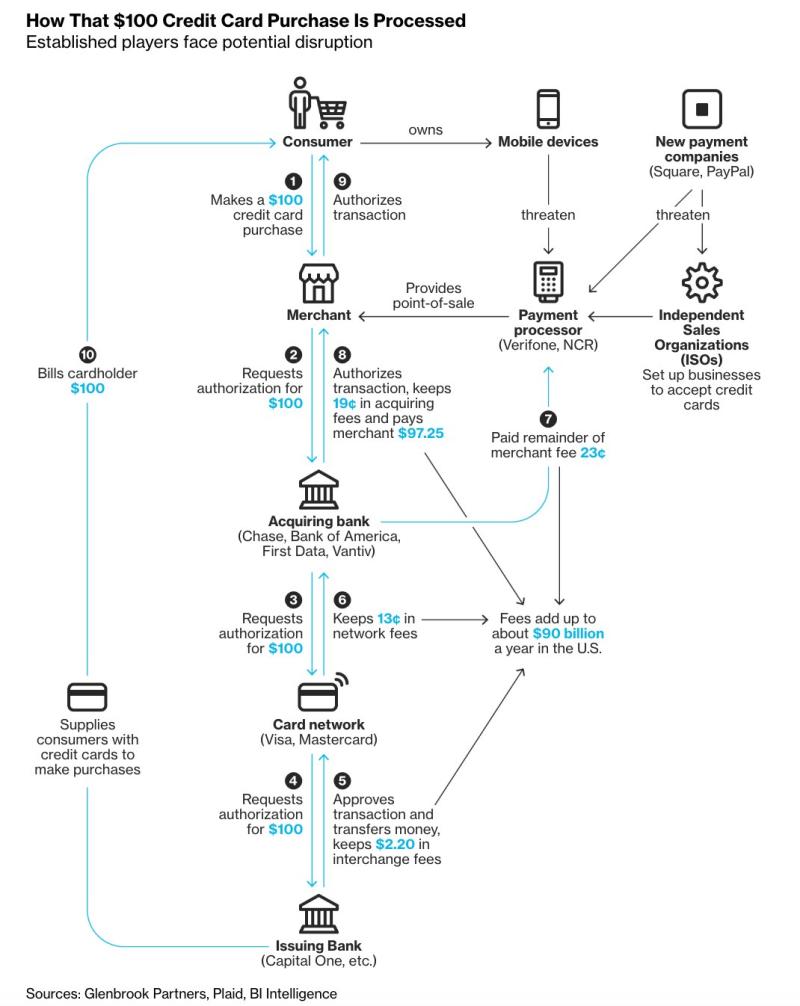While I was explaining the costs of Tap and Go and the benefits of you using Least Cost Routing, I noticed that some people were unclear on how the system works so I thought I better explain it.
This is a chart of the Credit Card network. Although it is for America and the charge figures are different in Australia, the overall system is roughly the same, and as a first-level approximation will do for this post.

Now we will follow through the chart by the numbers
1) A person purchases something in your store and uses a credit card.
2) Your EFTPOS unit will send the relevant details to the Acquiring bank, which is the provider you are signed up, eg CBA, NAB, Tyro, etc. As you have a relationship with these people, the fees are relatively reasonable.
3) The Acquiring bank will then go to the VISA, Mastercard, Alipay, etc. What there can be is a problem here as some of these Card networks fees can be fairly high. The merchant does have some controls, eg many merchants refuse some Card networks. The problem, however, can be here is that some cards like VISA have a range of cards with different fees and its very difficult for a merchant to identify which of these cards has the high fees. The other problem is that ACCC does not allow you to charge on the card type but only the supplier. I think this is wrong.
4) This is where the big problem arises with the fees. The Issuing Bank has no association with you on this transaction, it is the one paying the money and charges you the most. I can see no pattern in the charges although I am sure there is one.
Now when you use Tap and Go, you have no choice on how the transaction goes, so this is how it goes. That is why it generally has the highest fees.
If the customer selects Debit which has lower fees and you have Least Cost Routing in place, the Acquiring bank determines whether it is cheaper to put the transaction through the Card Network or whether it is cheaper to go direct to the Issuing bank. It will then select the cheapest way. Using this a merchant on our system saves on average about 7%. I have not seen any problems in usage with this option. That is why I think all my clients should make sure they have it.
Please click here for actual figures on how knowing how it works you can save.


